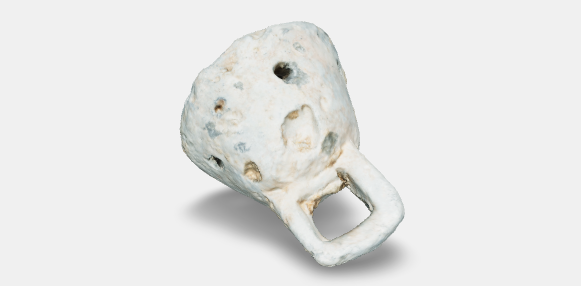Plummet. Bell-shaped; hollow inside. On top of the cap there is a quadrangular pierced grip. In the hollow part, some ribbings divide the space in four sectors, forming a cross-motif. Inside the bell there are encrustation made of sand mixed with another element that cannot be identified with certainty (perhaps tallow). Nine holes of different diameters form a corolla in the end section of the bell (1).
The artefact does not present signs of biological colonisation.
MEDAGLIA 2002, p. 167
1 See JONCHERAY 1975, p. 10, tav. III; BENOIT 1971, pp. 397 ff.., fig. 1; BONINU 1986, p. 58, fig. 4. The holes on the bell are not explainable as supports for casting works, but most likely their function is related to the water flow and therefore the balance of the plummet underwater.
Benoit F. 1971, Pièces de gréement et d’armement en plomb, engins et pièces decoratives trouvées en mer, in Atti del III Congresso Internazionale di Archeologia Sottomarina, (Barcelona 1961), Bordighera, pp. 394-411.
Boninu A. 1986, Notiziario dei Rinvenimenti Subacquei lungo la costa della Sardegna Centro-Settentrionale, in Archeologia Subacquea 3, Bollettino d’Arte 37-38 (supplemento), Roma, pp. 55-62.
Joncheray J.P. 1975, Etude de l’épave Dramont D: IV, Les objets métalliques, in Cahiers d’Archeologie Subaquatique VI, pp. 5-18.
Medaglia S. 2002, Materiali erratici dal mare di Kaulonia, in Archeologia Subacquea, Studi Ricerche, Documenti, III, pp. 163-185.



